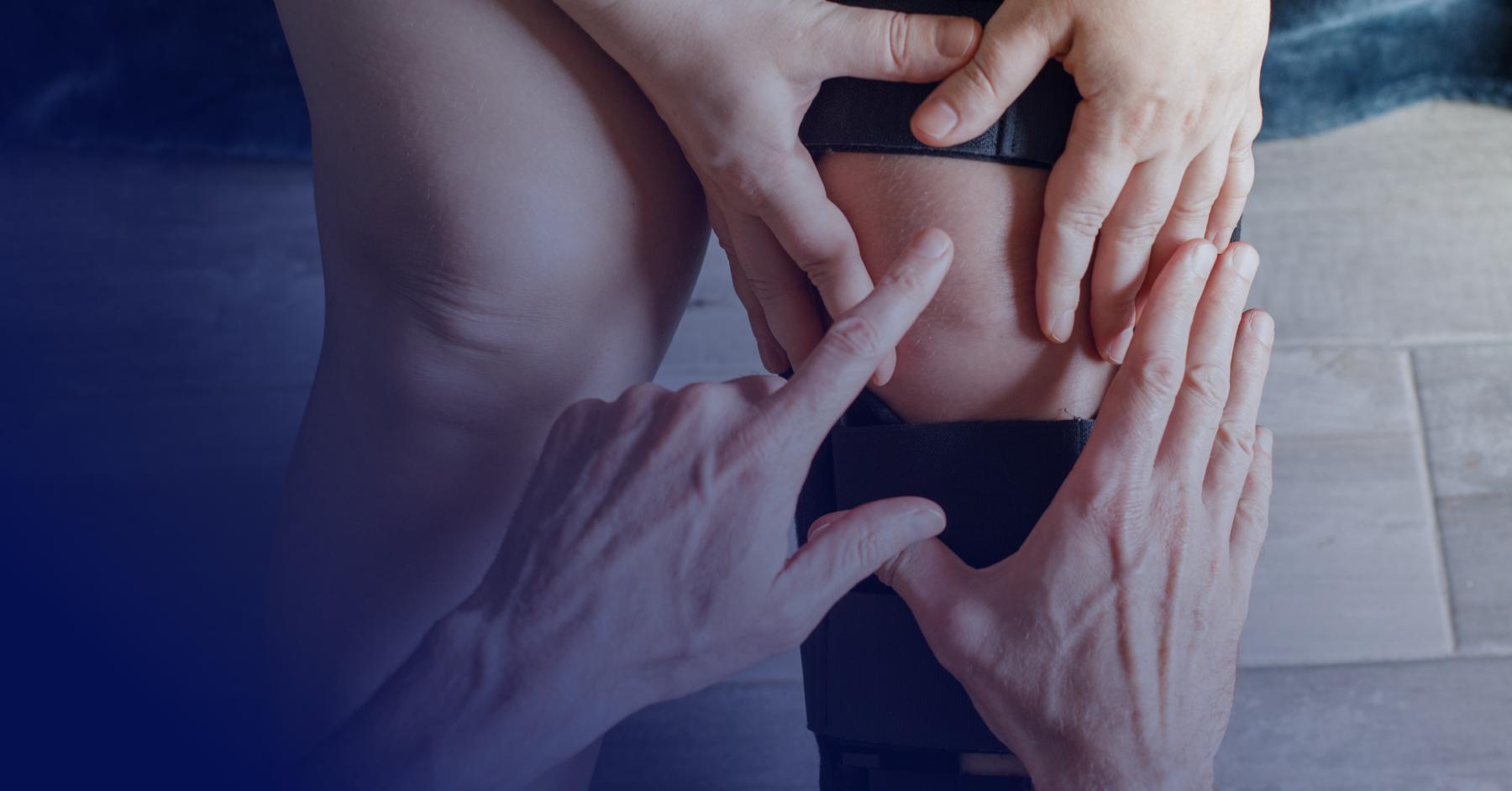Dance Injuries are Common - Here’s How to Prevent and Treat Them
Hip Injuries, Ankle Injuries, Workout Injuries

Dancing is a great way to build muscle strength and flexibility — but dancers must be careful if they want to sidestep serious injuries.
When done regularly, dancing is a great, fun exercise that strengthens muscles, builds stamina, and improves flexibility. Plus, dancers can choose from a variety of styles — from ballroom dancing to jazz ballet — that match their fitness level and personal preference.
However, like any athlete, dancers perform repetitive movements that put them at risk for overuse injuries and other orthopedic ailments. But dancers can still enjoy their favorite routines by learning what causes these traumas and how to prevent them.
The Most Common Dance Injuries
As with any sport, dancing has a few injuries that are particularly common. The four listed below are the top traumas that most often affect dancers.
1. Patellofemoral Pain
Also called runner’s knee, patellofemoral pain refers to pain under or around the kneecap, or patella. This injury is particularly common among dancers due to some of the moves involved in dancing. During a routine, a dancer may perform a jump or a plié (a knee bend), which, if done incorrectly, may cause pain. That pain is particularly likely to occur if the kneecap is misaligned, or the hamstrings or quads are weak or tight.
2. Sprained Ankle
Of all the injuries suffered by dancers, the most common is an ankle sprain. Landing awkwardly from a jump or performing a routine in ill-fitting shoes can stretch or even tear the ligaments of the ankle if they are pushed beyond their normal range of motion. Dancers will know when they’ve suffered a sprain because pain suddenly strikes either inside or outside the ankle, and the area begins to swell. People who have suffered one ankle sprain are at a more heightened risk of another, meaning it’s particularly important for dancers who have experienced strains to take precautions.
3. Hip Injuries
Snapping hip syndrome and hip impingement are two conditions that are also prevalent among dancers. A snapping hip injury occurs when the muscles and tendons responsible for stabilizing and flexing the joint tighten up as they move over the bones of the hip, creating a snapping sound or sensation. Snapping hip syndrome may also cause a hip impingement; however, this disorder has several other causes, including a labral tear, sacroiliac joint dysfunction (an inflammation in the joint between the two main bones in the pelvic area), muscle strain, or stress fracture.
Dancers with an imbalance between their external hip rotation (how far they can turn out) and internal rotation (how far they can turn in) are prone to hip impingements.
4. Achilles Tendonitis
The Achilles tendon connects the muscles in the calf to the heel, allowing the ankle to flex and enabling dancers to jump and lunge. However, repeatedly performing these motions may aggravate the tendon, leading to Achilles tendonitis — an overuse injury. Signs of Achilles tendonitis range from pain along the back of the foot to stiffness and limited range of motion in the ankle.
How to Prevent Dance Injuries
Dancers can take precautions to lessen the chance of a serious injury. Here are four tips they should keep in mind when hitting the dance floor:

1. Follow Proper Technique. Many dancing injuries are the result of performing a certain movement incorrectly. That’s why working with a professional teacher is so important. An instructor can help dancers execute a move properly so they don’t strain a muscle or ligament.
2. Cross-train. Even if dancing is your main workout, dancers should participate in other activities to develop strength and stamina. Aerobic exercises such as running, biking, and swimming boost cardiovascular health so dancers can perform long routines. Pilates and yoga can also help build up core and hip strength.
3. Stretch. Stretching before a dance routine reduces the odds of an injury. For example, dancers can avoid Achilles tendonitis by stretching the tendon before heading to the dance floor. To prevent snapping hip syndrome, dancers should stretch their hip flexors, quadriceps, glutes, and IT band (the band of fibrous connective tissue running from the hip to the knee) by moving the side of their body over a foam roller.
4. Know When to Rest. Sore muscles are to be expected after a vigorous dance routine. But continuing to dance when the pain is persistent only increases the potential of a serious injury. That’s why dancers should take a few days off and give themselves time to heal between each session.
Dance Injury Treatment
The right treatment for a dance injury will depend on the specific trauma. In most instances, the first line of therapy is RICE (rest, ice, compression, and elevation), a simple at-home treatment for many injuries.
Dancers who’ve suffered a more significant injury should work with a physical therapist to strengthen and stabilize the muscles and ligaments and develop a routine that helps ensure the injury is not repeated in the future.
If the injury cannot be cured with conservative treatments, surgery may be required. That’s usually the case if the trauma is due to a tendon tear.
Head Back to the Dancefloor — Safely
Dancing is a great way to have fun and stay in shape, but if you’re experiencing hip, knee, or ankle pain, it’s essential that you don’t let it go untreated. The specialists at All Sports Physical Therapy can work with you to help you return to the dance floor as soon as possible. Book an appointment with us today!



